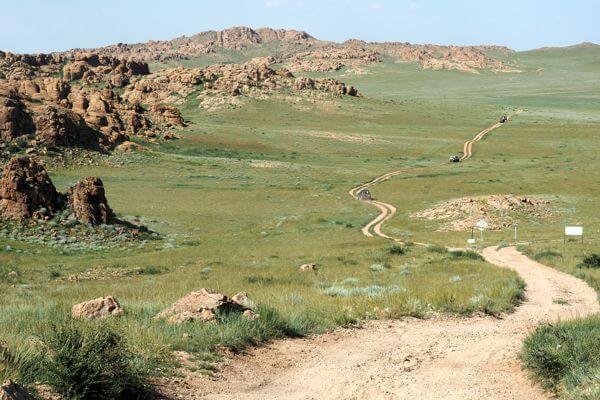Harmonic North Gobi and Central Mongolia
(4 days)
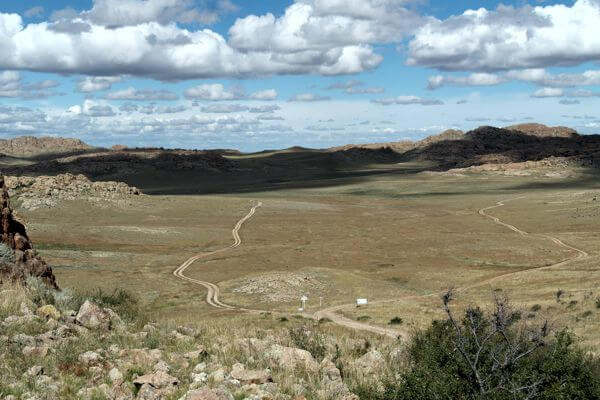
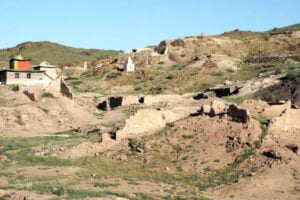
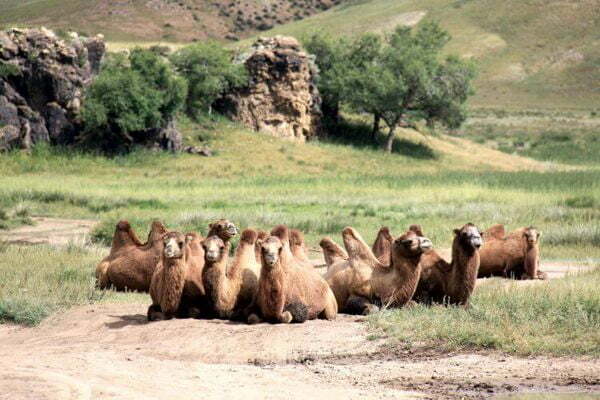
short description
Detailed description

Baga Gazriin Chuluu and Choir Monastery
After breakfast we will leave for the Mongolian countryside. Our first stop will be 250 km southward in the beautiful region of Baga Gazrin Chuluu. It is a huge granite formation in the middle of the Mongolian sandy plane.
On open plain we will visit the remains of a small monastery named Delgeriin Chior Monastery. You will be entering first time in Ger, huge impressive 12 walls Ger richly decorated and carved used by monks to chant during colder season when the stone monastery gets too cold to be inside.
End of the afternoon we will drive and hike around in the area. We will visit the picturesque ruins of a small monastery that are hidden in a nice little protected valley and wander between huge endless piled granite rocky hills as if they were put. There is a little spring in the rocks of Baga Gazriin Chuluu which is renowned for its eye healing power. Try healing your eyes as locals do and drip some magic water into your eyes.
(Ger camp L, D)
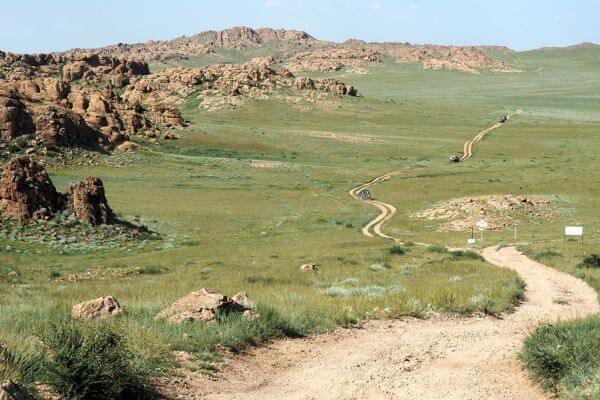

Sum Khukh Burd and Ongiin monastery
After a breakfast, we will start driving towards the North Gobi Desert. Today we will see the landscape changing dramatically from the fertile grassland to the inhospitable rocky land. The number of families and cattle we will see along the road will gradually reduce. Camels will slowly replace cows. During this 300 km trip (6 hours driving) we will stop at some interesting spots. The first place we will visit is the ruins of Sum Khuh Burd Monastery once surrounded by tiny lake. There used to be some remarkable bird life. Among others, the Mongolian lark, various species of prey birds, geese and swans come to this spring-fed lake. The Khukh Burd Monastery was flattened during the Mongolian purge period. (1928 – 1939) From here we will head for Ongiin Monastery.
In the evening after long hours of driving we will enjoy the peace and beauty of the Delger Khangai Mountains. We will explore the ruins of Khoshuu Monastery on one side of the river and the ruins of Ongiin Monastery on the other side of the river. We will hike around in this massive series of rocky hills cut by the river. The monasteries were built in the 17th century and destroyed in 1937. They were among the largest temples in Mongolia and housed over 1000 monks. Nowadays between ruins little monastery was built and in Ger museum are exhibited interesting and rare remains of old monasteries.
(Ger camp B, L, D)
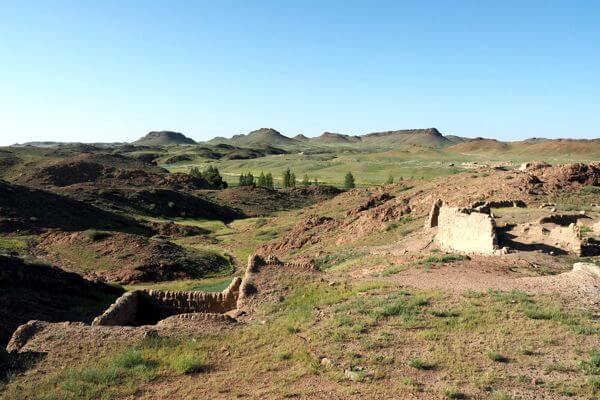
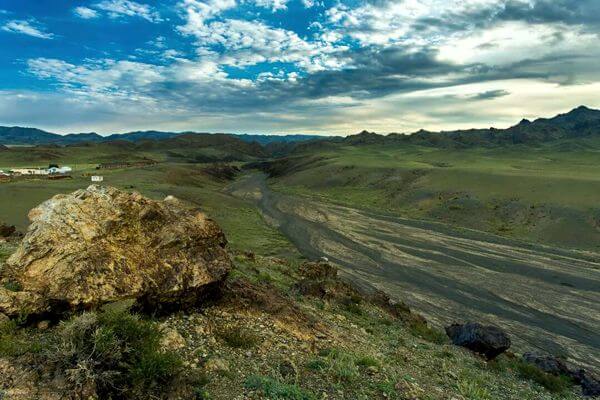

Karakorum
After an early wake up, we will set off for a driving day to Karakorum (also called Kharhorin).
Karakorum is the site of the 13th century capital of the Mongolian Empire created by Genghis Khan. The founding of Karakorum started on the ruins of Turug and Uigur cities in the Orkhon valley at the eastern end of the Khangai Mountains in 1220 by the Genghis Khan’s order. It was completed 15 years later during the Ugedei Khan’s reign. The town was a very cosmopolitan and religiously tolerant place.
The silver tree, part of Möngke Khan’s palace has become the symbol of Karakorum. The highest peak of its prosperity was from 1220 to 1260. The specific feature of this stage is that Karakorum existed as the great capital of the Euro-Asian Empire with Mongolia as its core and as the centre of politics, economy, culture, religion, intellect, and diplomacy and the prominent tie of international relations.
Between 1260 and 1380 Karakorum lost the status of the Great Mongolian Empire and became the capital of Mongolia. When Khublai Khan claimed the throne of the Mongol Empire in 1260, as did his younger brother, Ariq Boke, he relocated his capital to today’s Beijing. Karakorum was reduced to the administrative centre of a provincial backwater of the Yuan Dynasty.
In 1368, the rule of Mongolian Yuan Dynasty collapsed and the centre of Mongolian government was shifted to its homeland after 110 years since Kublai Khan moved the Empire capital to China in 1260. It gave Karakorum a chance to prosper again.
In 1388, Ming troops under General Xu Da took and destroyed the town.
Today nothing is left from this legendary city.
In 1580, when Abtai Sain Khan together with his brother, lord Tumenkhen, visited the 3rd Dalai Lama and expressed their wish to build a temple in Mongolia, he advised them to reconstruct one old temple in Karakorum. The temple in Takhai ruins that was restored in 1588 according to the Dalai Lama’s recommendation is the Main Zuu temple of Erdene Zuu monastery.
Now Erdene Zuu Monastery is all that remains of what once was a huge monastery of 100 temples and about 1.000 lamas residing there. We will explore the grounds of Erdene Zuu Monastery surrounded by its massive 400 m X 400 m walls. We will be guided around the 3 remaining temples: Dalai Lama, Zuu of Buddha and Lavrin Temple.
Another place we will visit will be Karakorum Archaeological Museum. It is a small museum but housed in a modern well-run building with good lighting and display cases with clear English labels. The exhibits include dozens of artefacts dating from the 13th and 14th centuries which were recovered from the immediate area, plus others that were found from archaeological sites in other parts of the provinces, including prehistoric stone tools. You’ll see pottery, bronzes, coins, religious statues and stone inscriptions. There’s also a half-excavated kiln sunk into the museum floor. Perhaps most interesting is the scale model of ancient Karakorum, which aims to represent the city as it may have looked in the 1250s, and is based on descriptions written by the French missionary William of Rubruck. Another chamber exhibits a most recent addition, a Turkic noble tomb with wall paintings and artefacts, including gold items and jewellery. There is a short video of actual burial site.
We will also see the Turtle Rock and the Phallic Rock, visit little market behind walls exposing local arts by locals.
(Ger camp B, L, D)
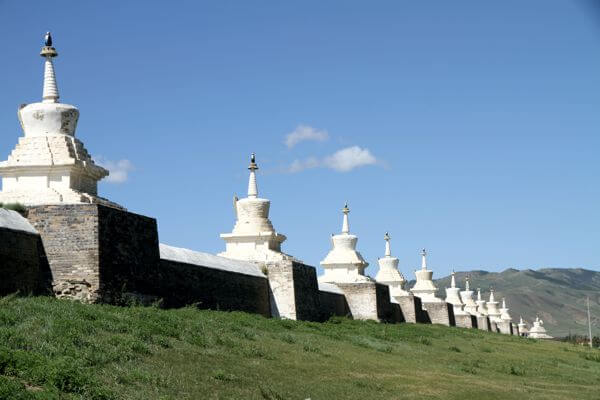
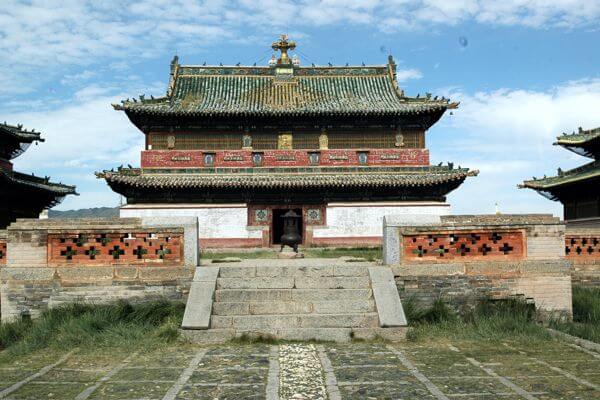
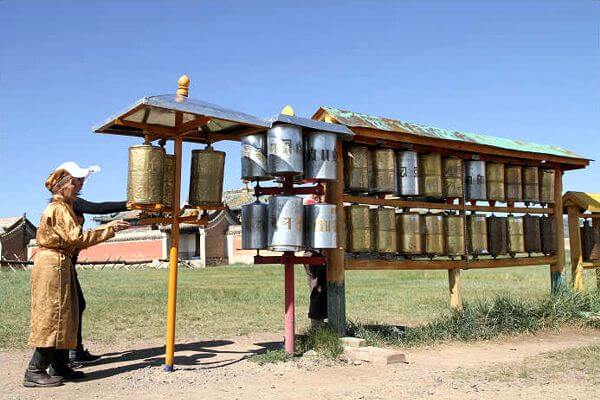
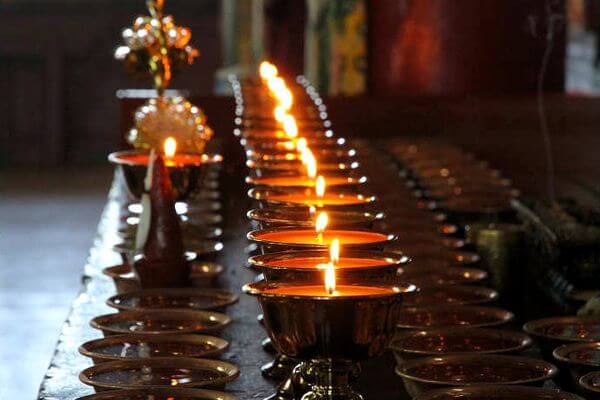

Ulaanbaatar
We will have a driving day back to Ulaanbaatar. You may enjoy the free afternoon to catch up all the places you haven’t visited yet. You might check as well the beautiful cultural show enjoy the colourful and rhythmic Mongolian dance, throat singing and admire & contortionists.
(B, L)
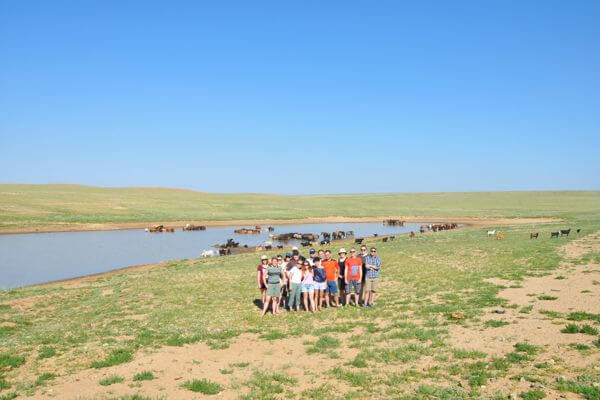
OPTION 1: Orkhon valley waterfall & Tovkhon Khiid
The optional stop could be at Tovkhon Monastery, established during the 1650’s by Zanabazar, one of Mongolia’s most respected religious leaders. The monastery’s wooden buildings are integrated with a natural system of caves perched near a hilltop, from which you have beautiful views of the Orkhon Valley and the surrounding pine forests. On the top of the cliff, a pile of stones to worship a god of this mountain forms a hill. It is called Ovoo. The valley is registered as world cultural heritage by UNESCO due to its ancient findings, artefacts related to early 6th century and even before that. As well as, 12th to 13th century great Mongol empire had expanded its capital Karakorum here. Moreover, pasture nomadic lifestyle still remains here and it keeps both historic and nomadic view of life.
In the Quaternary era a volcano erupted near the beginning of the Tsagaan Azarga or White Stallion River and the lava flowed down the Orkhon valley forming the 10-meter-thick layer of basaltic rocks. The basaltic layer was crosscut by the Orkhon River continuously and the canyon was formed as a result.
At the beginning of this canyon lays the 20 meters high, 10-meter-wide waterfall. The most adventures of you will climb down the canyon and swim the lake located at the foot of the waterfall.
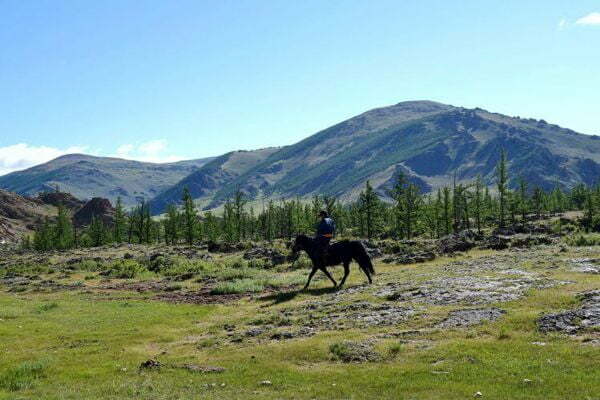
OPTION 2: Khustain Nuruu National Park
Przewalski’s Horse (Equus ferus przewalskii, also known as the Takhi horses) is a rare and endangered subspecies of wild horse native to the steppes of central Asia. The Takhi became extinct in the middle of the 20th century. They then could only be found in the zoos. Special breeding programs increased their numbers. At one time extinct in the wild, it has been reintroduced to its native habitat in Mongolia at the Khustain Nuruu National Park, Takhin Tal Nature Reserve and Khomiin Tal. Khustai Nuruu National Park was declared reserve status (category III) for over 50,000 hectares of the Khustain Nuruu area in 1993 but after significant scientific field researches into the area it was upgraded to a national park in 1998. Khustai Nuruu National Park is located about 100 km southwest from Ulaanbaatar. It protects today Mongolian’s Takhi wild horses. Today there are about 350 Takhi horses in Khustai. The park is home to 459 species of vascular plants, 85 species of lichens, 90 species of moss and 33 species of mushrooms. 44 species of mammals have been recorded, including Red deer, Mongolian gazelle, Roe deer, Wild boar, Wild sheep, Ibex, Mongolian marmots, Grey wolves, Lynx, Pallas’ cat, Red fox, Corsac fox and Eurasian badger. The 217 species of birds include Golden eagle, Lammergeier, Great bustard, Whooper swan, Black stork, Daurian partridge and Little owl. There are 16 species of fish, 2 species of amphibians, and 385 species of insects (including 21 species of ants, 55 species of butterflies, 10 species of bush crickets and 29 species of grasshoppers).
After arrival at the camp of the Khustai Nuruu National Park we will meet the staff of the park and be introduced to the project. In the afternoon we will explore the beauties of the Park by jeep, on foot or on horseback.
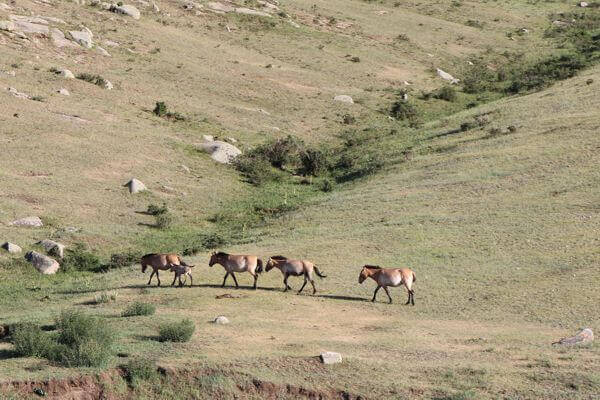
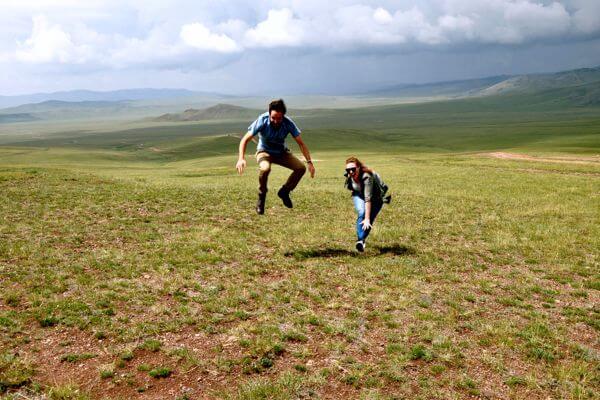
OPTION 3: Family stay in Central Mongolia and Horse Riding
The family lives close to a river in the wide open Mongolian steppes. We will experience the warm hospitality offered by the Mongolian families. For dinner we will be offered a typical Mongolian barbeque that will be prepared by nomads. Those who want will have the opportunity to try the “airag” or fermented mare milk if your travel dates fall within right season. Our guide – translator will help us to forge contact with the local population.
Those interested will have the opportunity to do horse riding.
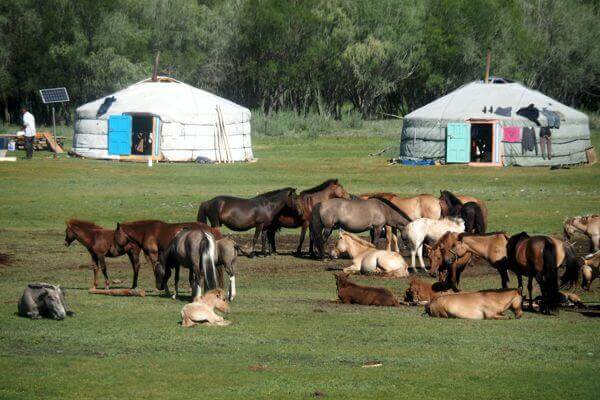
OPTION 4: Family stay in North Gobi and Camel Riding
The family lives in the Gobi Desert. We will experience the warm hospitality offered by the Mongolian families. For dinner we will be offered a typical Mongolian meal that will be prepared by nomads. Those who want will have the opportunity to try the “camel airag” or fermented camel milk if your travel dates fall within right season. Our guide – translator will help us to forge contact with the local population.
Those interested will have the opportunity to do camel riding.
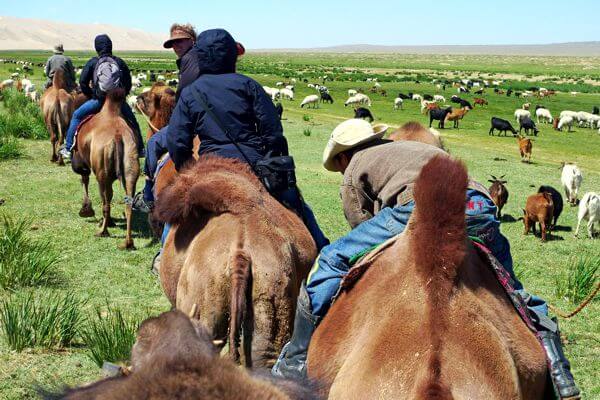
INCLUDED
- Land transportation
- 3 nights Ger camp stay
- Meals 3B, 4L, 3D
- Tour guide
- National park, museum, monastery entrance fee
NOT INCLUDED
- Hotel in Ulaanbaatar
- City touring
-
Medical, trip insurance and
evacuation costs - Alcoholic and soft drinks
